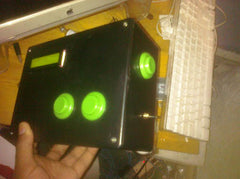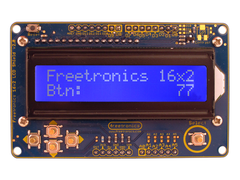Using an Arduino, a PC and a lot of chemistry, instructables user 'ckrobi' has created from scrap an oxygen-injected miniature blast furnace. This is used for experimenting with ceramics and metal. Using a PC running python/GUi software they control an Arduino which takes care of the various furnace hardware. For control integrity they have created their own communication protocol over serial between the PC and Arduino. The system can also monitor various parameters and return the values back to the PC. Furthermore, heed the safety warnings if you're making your own.

For more information, code and instructions click here. And we're on twitter and Google+, so follow us for news and product updates as well.
Thinking of making your own blast-furnace with an Arduino? Consider using the Freetronics LeoStick:

Apart from being one of the smallest Arduino-compatibles on the market with USB, it also has an onboard RGB LED and piezo which can be used a knock sensor and various tune and sound effects. Plus you can add extra circuitry with the matching protostick! For more information and to order, click here.
























